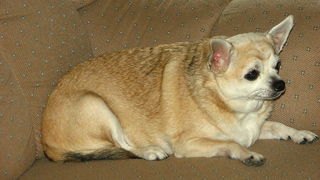Testosterone
Overweight Pet Owners Are Likely to Have Overweight Dogs
Whether a dog will become obese is influenced by some surprising factors.
Posted July 24, 2019 Reviewed by Gary Drevitch

According to the Association for Pet Obesity Prevention, there are an awful lot of fat dogs in North America. In March 2019, the association released its most recent survey results based on the assessment of 1560 dogs gathered from 146 veterinary clinics and representing 41 U.S. states. According to the results, 36.9 percent of dogs were classified as overweight and 18.9 percent were classified as obese. That means that 55.8 percent of American dogs are too heavy.
As in the case of humans, being overweight or obese is not just a cosmetic problem, but tends to predispose individuals toward a large number of health problems. These problems include arthritis, diabetes, hypertension (high blood pressure), liver disease, breathing difficulties, lower immune system function and a predisposition toward certain types of cancer-related tumors. Overall, dogs that are overweight have a reduced life expectancy.
Given these dire consequences experienced by corpulent dogs, it is not surprising that researchers are conducting studies to see if they can isolate common factors that seem to increase the risk of obesity in pet dogs. The newest study comes from a team of Danish scientists headed by Charlotte R. Bjørnvad at the Department of Veterinary Clinical Sciences of the University of Copenhagen. This study was a bit different than others in that it not only looked at the specific characteristics of the dogs but also at the characteristics of the dog's owners. Although not a particularly large sample (only 268 dogs) many measures were taken to help describe each animal and their owners, and some of the findings seem to be intriguing, and perhaps potentially useful if we want to attempt to control the weight level of our dogs.
One of the first variables that this research team looked at was the effect of neutering on obesity. There have been hints that neutering dogs tends to increase the probability of being overweight. In this study that outcome was confirmed for male dogs; neutered males had a much higher rate of obesity. Neutering had no effect on females, but age did, with older female dogs tending to run significantly heavier. The reason for the difference between male and female dogs may well have to do with the circulating levels of testosterone. At least in humans it has been shown that a lack of testosterone can lower the metabolic rate, resulting in lower energy requirements and thus a greater likelihood of weight gain. Neutering has an obvious effect by causing lower testosterone levels in males; however, spaying of females does not affect their level of circulating testosterone (which is already low).
One of the findings of this study which I found surprising was that the feeding schedule used with dogs affects the likelihood that they will become overweight. Dogs who were fed only once daily had a much higher tendency to be overweight or obese than were dogs who were fed twice daily. In this study, 14 percent of the dogs were fed ad libitum (the scientific term for free feeding where the food is left out all of the time and the dog can eat whenever and however much he desires). This free feeding schedule actually resulted in a slight reduction in the likelihood of obesity, although this was not a very large effect, and to my mind not enough to offset the psychological benefits of scheduled feeding. It is during scheduled feeding that the dog gets to associate the availability of food with the actions of the owner, rather than coming to believe that the food is bestowed upon it by the floor as happens in free feeding.
From the point of view of a psychologist, perhaps the most interesting results came when the researchers assessed the association between the weight of the pet owner and the weight of their dogs. If we group together the slim and normal weight owners we find that the prevalence of heavy or obese dogs is 14 percent. If we have an overweight pet owner, that percentage doubles, so that now 28 percent of these dogs are overweight. However, if we look at obese dog owners, that percentage rises all the way up to 35 percent of their companion dogs being heavy or obese.
The reason for this association between obesity in the dog and the owner's weight is not clear, although the authors obliquely suggest that this may have to do with the number of treats that a dog is given during times when the canine and human are both simply relaxing. I gather that their argument runs something like, the owner has become overweight because during downtimes (just sitting around or watching TV, etc.) the owner has a tendency to nibble on refreshments and that extra consumption of food adds to his or her weight. Of course, the family dog hangs around the owner. In this situation, it is likely that the owner feels a bit guilty that they are eating and their pet is not, so they reward the dog with unearned and calorically unneeded treats. If this becomes a habitual form of behavior, the obvious result is a plump dog.
Copyright SC Psychological Enterprises Ltd. May not be reprinted or reposted without permission
References
C.R. Bjørnvad, S. Gloor, S.S. Johansen, P. Sandøe and T.B. Lundc (2019). Neutering increases the risk of obesity in male dogs but not in bitches — A cross-sectional study of dog- and owner-related risk factors for obesity in Danish companion dogs. Preventive Veterinary Medicine, 170, https://doi.org/10.1016/j.prevetmed.2019.104730


